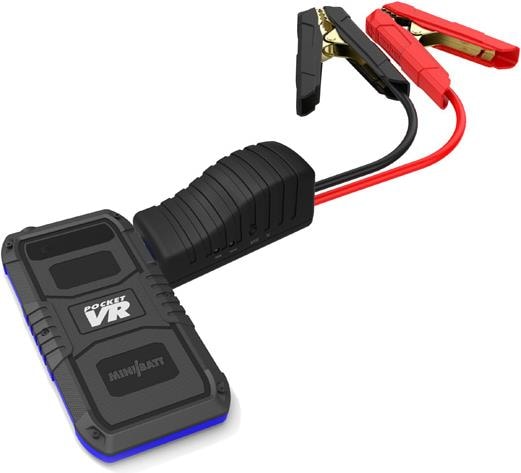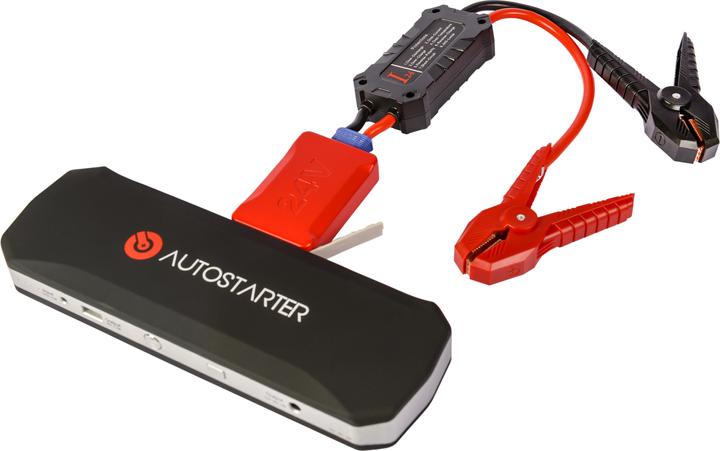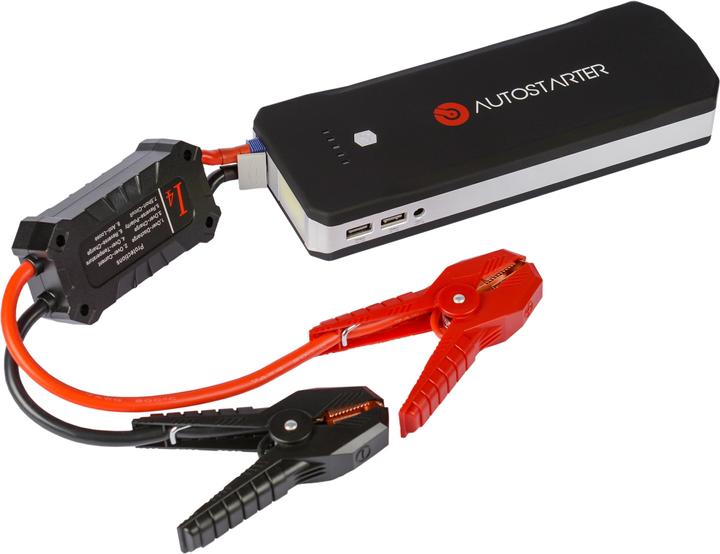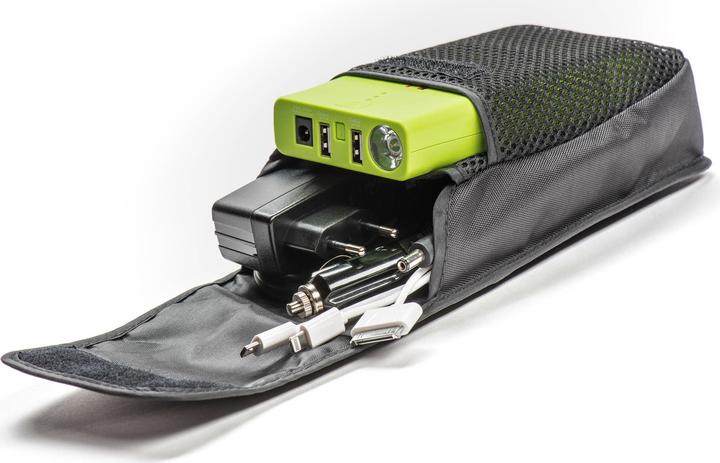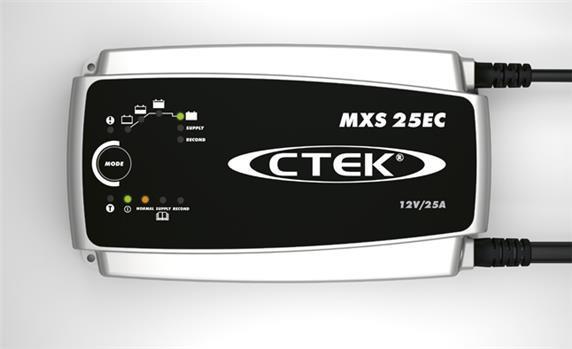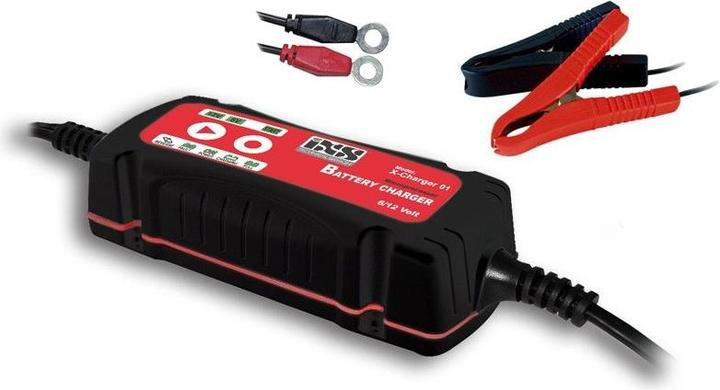
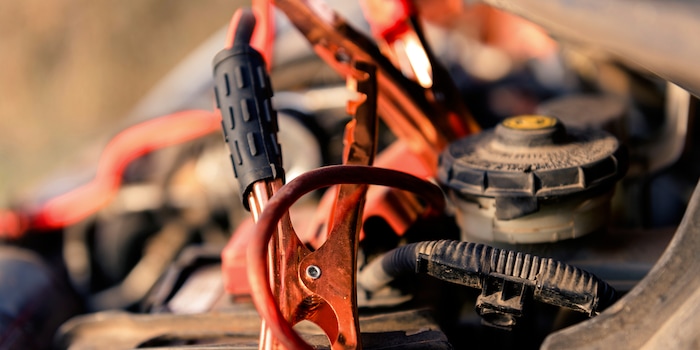
Never be stranded again: starting aid for cars
What to do when your car breaks down? In this article, we'll show you the various options for getting your battery back in service.
Mobile starting aid
Most batteries last for five years. However, it always happens that we forget to turn off the light. In this case, having a mobile starting aid to hand can come in handy: this is a mobile power station. It has a built-in battery that can help out the driver without him having to rely on another car.
Modern startboosters for private use are generally a compact size so they can be stowed in the glove compartment. A very useful aspect is also that they can, among other things, act as an integrated smartphone, tablet and notebook charger. So your gadgets never run out of battery.
The comparison values for starting aids are starting current and capacity. The higher the values, the more powerful the startbooster. The capacity indicates how many times the car can be started or for how long the battery can be used. The starting current indicates how much power is available for starting. Cars running on diesel, for example, need a higher current.
For a successful start, simply attach the clamps of the starting aid to the respective poles of the battery. Be careful to use the red clamp for the positive pole and the black clamp for the negative pole. Do not switch on the starting aid until all the connections have been made. After a successful start, it is advisable to remove the clamps within 30 seconds.
Remember to follow the instructions supplied with each model.
To recharge the battery, please use the micro USB cable: you can power the starting aid during the journey using the cigar lighter, or, of course, a standard power socket.

Starter cables
If you have jumper cables, your car can be started using another car. In this case, a number of rules must be followed to avoid damaging the vehicle's electronics.
First of all, you need to put the cars in the right position, i.e. so that there is as little distance as possible between the two batteries: it's best to have the batteries side by side. In some cases, you have to push the broken-down car out of the car park, because the length of the cables is limited. In some cars, the battery is in the boot. In both cars, switch off the ignition and any appliance that consumes electricity. Put, the car in neutral or in P if it is an automatic gearbox.
Here's how to do it:
- Always consult the vehicle owner's manual for the correct procedure depending on the vehicle.
- The nominal voltage must be the same on both batteries (12V for example).
- Electrical appliances must be switched off in both cars.
- Please ensure that the vehicles do not touch. Otherwise, current could flow.
- Attach one of the clamps on the red (+) cable to the positive (+) pole of the discharged battery. Take care when handling the red cable. If one of the clamps is already hooked up, the other must under no circumstances be in contact with the bodywork.
- Hook the other clamp on the red cable to the positive (+) pole of the full battery. Be careful to follow the order: always start with the red cable and then continue with the black.
- One clamp of the black cable is hooked to the negative (-) pole of the full battery.
- The other clamp on the black cable should be attached to a ground point on the disabled vehicle. A ground point is, for example, a stable metal part under the bonnet or on the engine block itself. For safety reasons, it is advisable not to connect the cable directly to the negative pole of the broken-down car, as any oxyhydrogen output could catch fire if sparks are formed.
- Make sure that the cable does not come into the vicinity of the fan or belt.
- In the first instance, start the car with the battery charged and then the car to be serviced and an appliance that draws a lot of current, for example the rear window heater, to avoid power surges.
- Then you can remove the cables in reverse order. First the black clamp from the car to be serviced, then the other black clamp. Then the red clip from the car with the charged battery and the other red clip. Finally, switch off the power-consuming appliance. Once the car has started, consider taking it for a longer drive to allow the alternator to fully recharge the battery.
If nothing happens during the cranking test, check that all the clamps are properly hooked. If nothing still happens, call in an experienced person. If the battery is empty again next time, it should be replaced. With age, batteries lose power.

Automotive battery charger
The charger must be chosen so that it meets the requirements of the battery in question. The important characteristics for finding the right charger are the current (always 12V for recent cars) and the battery capacity (generally between 70 and 100 Ah).
The car charger gives information about the battery's charge status. What's more, today's models have programmes that detect anomalies and malfunctions, and charge the battery gently.
A car charger gives information about the battery's charge status.
With a battery charger that has an automatic Delta Peak switch, you can recharge your battery at night, without worrying: the device automatically switches off as soon as the battery is full.
Leaving a modern appliance plugged in for longer periods is no longer a problem either.
Here's how to do it:
- Turn off all power-consuming appliances (radio, ventilation, etc.).
- Disconnect the cables linking the battery to the car.
- For maintenance-free batteries, you'll find a drain pipe on the side that should be clear of dirt and the like. If it's a small maintenance-free battery, it's advisable to remove the caps during charging, as gases can be released. You should also check the acid and water levels. If the latter is not sufficient, fill the battery with distilled water up to the mark indicated.
- Attach the charger's red clamp to the positive pole and the black clamp to the negative pole of the battery. You can now plug the charger into the mains and switch it on.
- Then follow the instructions on the charger. When the charging cycle is complete, first disconnect the charger from the mains and then remove the battery cables.
- If necessary, recap the battery plugs. To reconnect the battery to the car, start by reconnecting the red cable to the positive pole and then, finally, the black cable to the negative pole.
See all car batteries //
View all automotive battery chargers //
See all starting aids //
See all jumper cables
You may also be interested in this article:
Hello, I'm Nicolas. I've been into sports since I was a kid. Be it endurance sports or team sports, I've tried just about everything. As Category Business Manager, I give my all every day to offer you an exciting and up-to-date range of sports. Therefore I put many products through their paces before I put them in our online shop. My goal here? To always discover new things and to improve on the tried and tested!
Interesting facts about products, behind-the-scenes looks at manufacturers and deep-dives on interesting people.
Show all